February 24 marks two years since Russia launched its large-scale invasion of Ukraine. All this time, a variety of satellites in orbit have been monitoring the events. They have created unprecedented opportunities for the military and civilians to quickly understand what is happening on the ground.
The beginning of the invasion
It’s been ten years since Russia launched its armed aggression against Ukraine. However, for many people in the world, this fact became apparent only 2 years ago after the aggressor’s troops carried out a large-scale invasion of territories that had previously been free of hostilities. Since then, many people have finally seen the light and realized the horror of the “Russian world”.
Satellite images played an important role in all of this from the very beginning. They were taken by reconnaissance vehicles from different countries, but the bulk of them were obtained by private companies such as Maxar Technologies and Planet Labs. Thanks to their promptness, we can recreate the events of this war more accurately than any other war of comparable scale.
It all started on the eve of the invasion. For weeks, Western intelligence agencies had been reporting that Russian military equipment and soldiers were amassing along the entire Ukrainian border. And while the aggressor country, as always, claimed that it was all lies and provocations, images obtained by private company satellites showed huge accumulations of tanks, armored personnel carriers and trucks ready to make a breakthrough across the border.
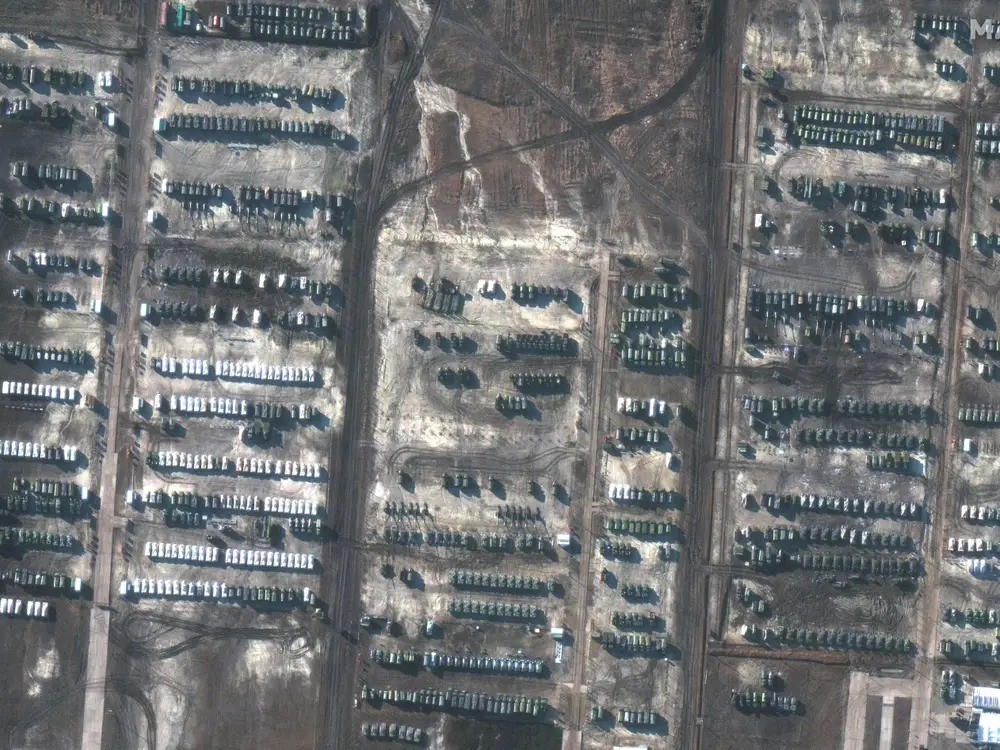
Russian troops near the village of Soloti in the Belgorod region on December 5, 2021. Source: Maxar Technologies
The fact that Russian troops gathered not just for training, but for something much more serious, was evidenced not only by optical surveillance satellites. HawkEye 360, a company whose devices monitor the operation of navigation systems, recorded problems with GPS both in the already occupied territory of Donbas and along Ukraine’s northern border. It was clear that this was due to electronic warfare systems operation.
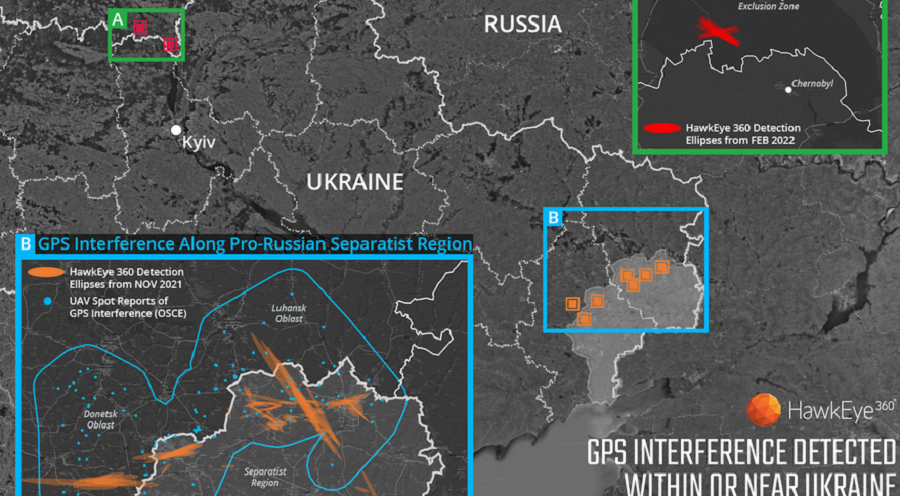
Disruption of GPS operation. Source: HawkEye 360
All of these suspicions were confirmed on the morning of February 24, when huge columns of Russian equipment crossed the Ukrainian border and moved toward major cities. One of the largest ones stretched from Belarus to Kyiv. The satellites saw it so well that they were able to distinguish even individual trucks and assess their condition in general.
The Russians acted extremely clumsily. That allowed the Ukrainian troops, who took up a maneuverable defense, to inflict devastating losses on them. They were able to act quickly and accurately thanks to satellite imagery, which allowed them to know about the enemy’s movements, while the Russians did not know about the movements of Ukrainians.
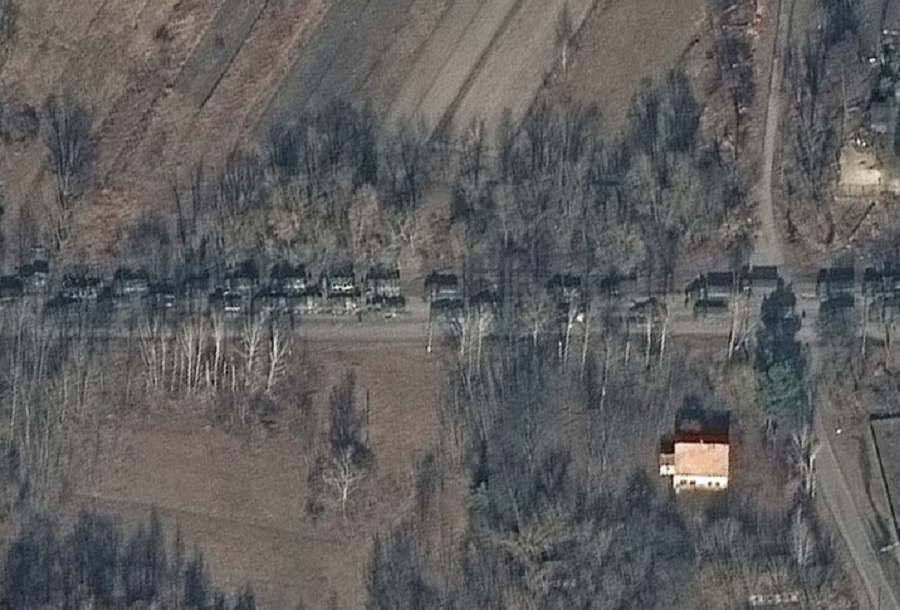
Trucks in a Russian convoy near Kyiv in March 2022. Source: spacenews.com
In these circumstances, Ukrainian entrepreneur Max Polyakov addressed the global space community. As a well-known figure in the field of private space exploration he asked commercial companies Planet Labs, Maxar Technologies, Airbus, SI Imaging Services, SpaceView, BlackSky, Iceye, Capella to provide free access to their images to the Ukrainian military.
The emotional 20-minute speech became one of the bricks that laid the foundation for foreign countries’ trust in Ukraine in this war. A little later, Maksym Polyakov got more practically involved in this cause and bought Ukraine access to GEOSAT imagery at his own expense.
Subsequently, images from commercial companies began to arrive regularly. And they did not always bring good news. For example, on February 28, one of the images confirmed the destruction of the world’s largest airplane, the An-225 Mriya, by the Russians. It fell victim to the fighting for the airfield in Hostomel (near Kyiv), which the Russians were trying to use as a springboard for their landing.
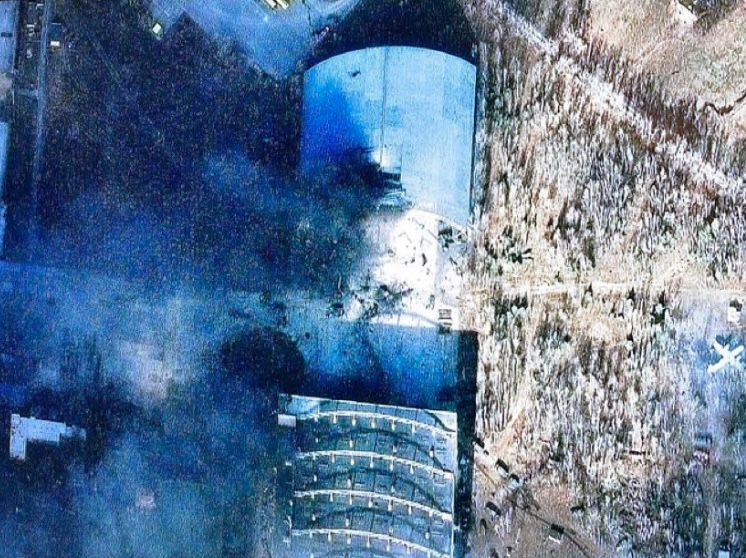
Hangar with the Mriya
Later, the Russians were driven out of the Kyiv region, and the world learned about the horrific results of their stay in Bucha and Irpin. However, the aggressor country tried to shift the blame for the killing of civilians to Ukraine.
However, this is where the ability of commercial satellites to photograph the same piece of land many times over the course of a month played a role. Thanks to this, not only investigators but also ordinary people were able to see with their own eyes when the bodies appeared on the streets as well as the mass grave near the church.

The mass grave in Bucha (above the church). Source: Maxar Technologies
At the same time, the first satellite images began to appear showing damage to Russian equipment. An example of this is the image of burning Russian helicopters at the airfield in Chornobaivka, which later became extremely famous. It helped to refute Russia’s propaganda lies that its offensive was going according to plan and with virtually no losses.
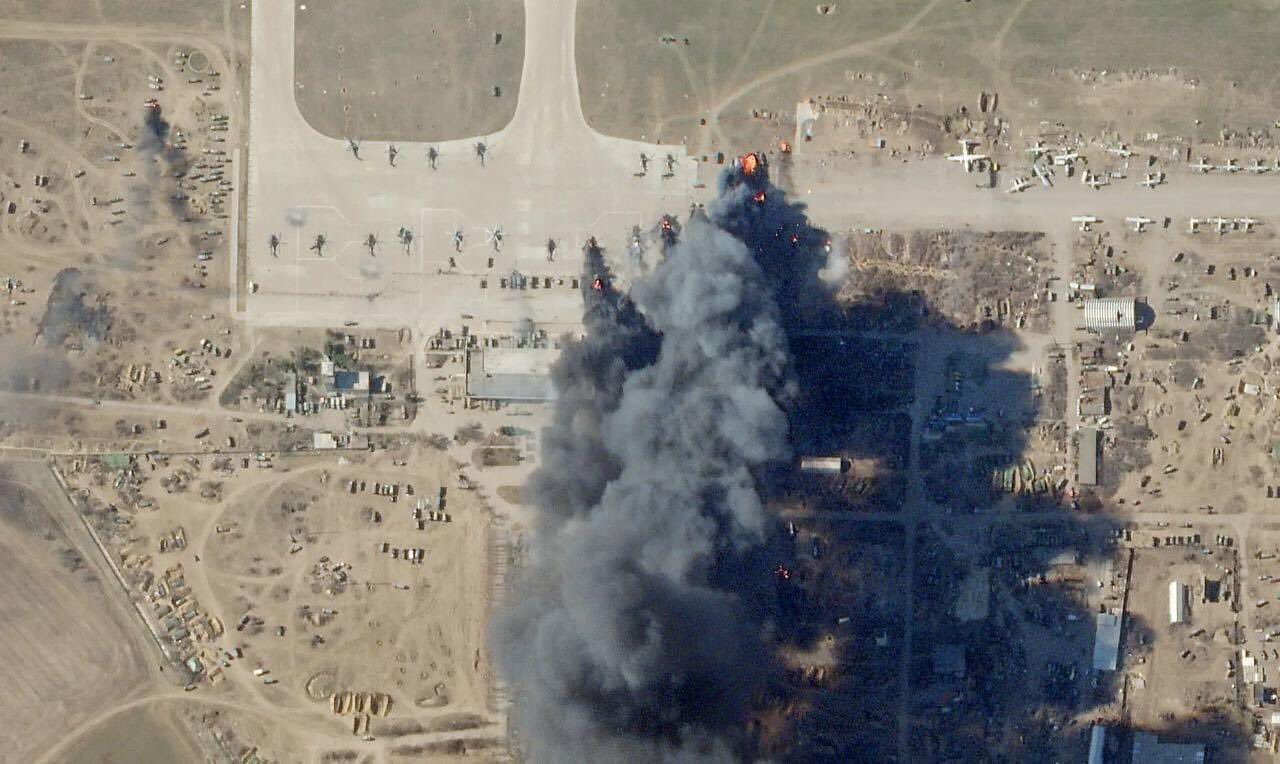
Burning helicopters in Chornobaivka. Source: Planet Labs
Mariupol
Then the war gradually retreated from Kyiv. However, in the east and south, it was only gaining momentum. Mariupol became one of the hottest spots in the spring of 2022. Now Russia is trying hard to hide the brutality with which it stormed the city. However, satellite imagery on Google Maps has preserved the appearance of the city’s theater, where civilians were hiding after it was bombed by Russians.
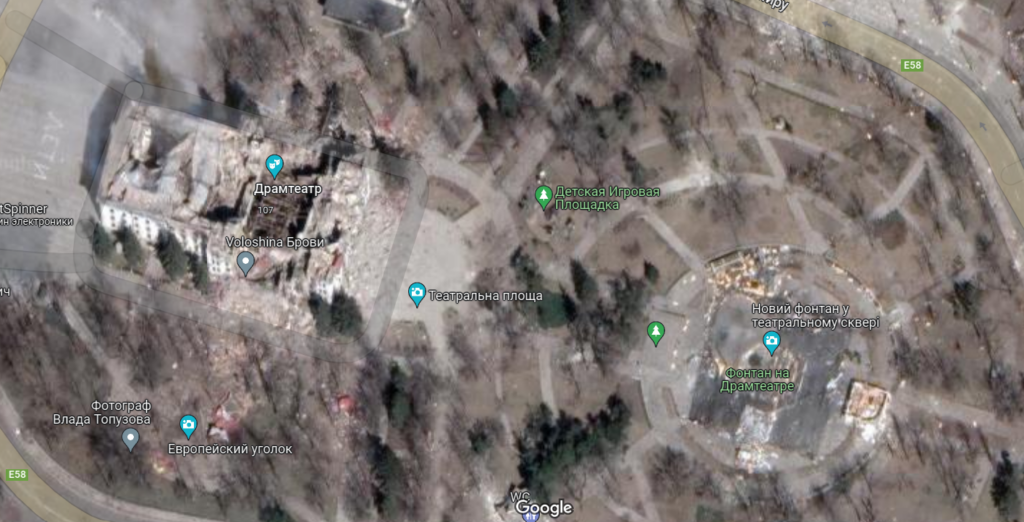
A drama theater in Mariupol
In addition, in the spring of 2022, satellite images appeared that helped to establish the impact of the war on the civilian population. Thanks to constant surface photography, it was possible to record how a new cemetery was growing near Mariupol. Thus, satellites played an important role in documenting war crimes.
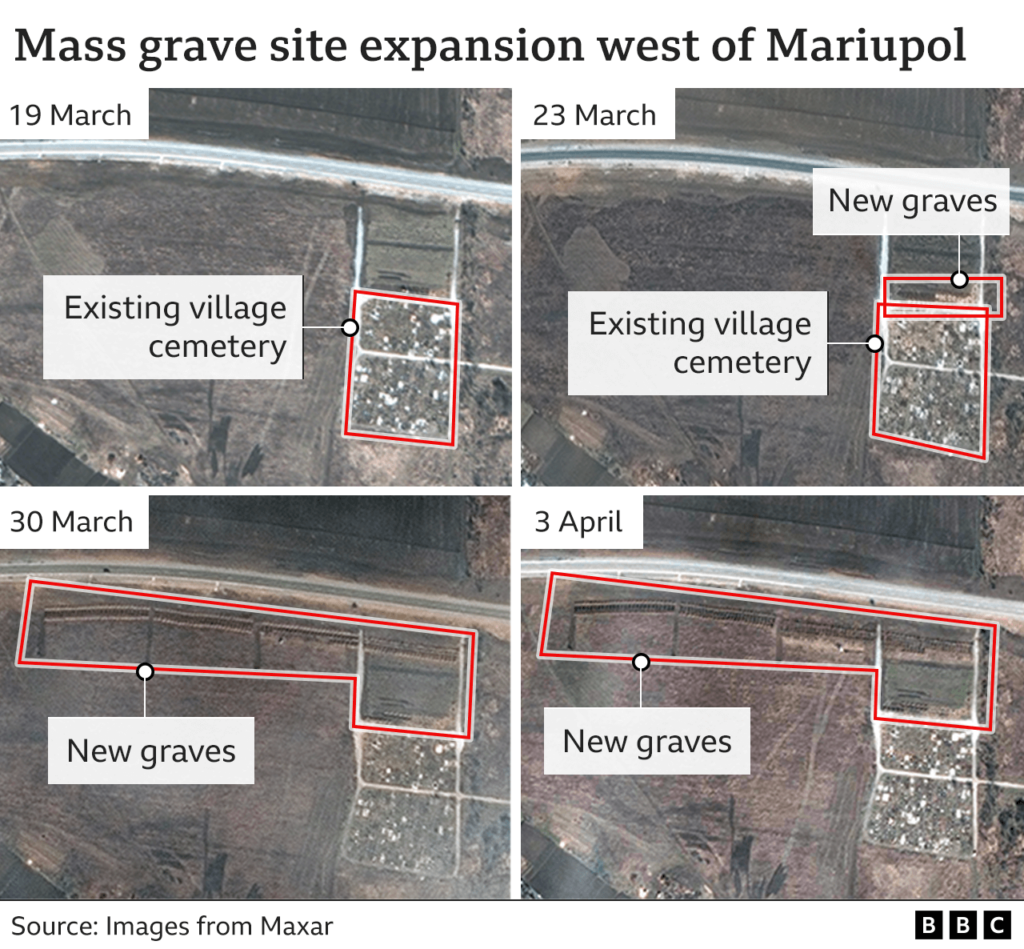
Changes at the cemetery in Mariupol. Source: Maxar Technologies
In parallel, there was a heroic defense of the Azovstal plant. The spacecraft were able to show how devastating the Russian attacks on the positions of the Ukrainian defenders were.

The Azovstal plant. Source: Maxar Technologies
In general, thanks to satellite data, we were able to learn a lot about how the occupiers behave in the Donetsk region. Comparing satellite images with photos taken on the ground and witnesses’ accounts helped a lot. In particular, it became known that they had set up a network of filtration points and prisons, which was used to identify pro-Ukrainian people.

A line of cars near the filtration point in the village of Bezimenne. Source: hub.conflictobservatory.org
One of the key elements of the established filtration system is the prison in Olenivka. In July 2022, Ukrainian prisoners died here under strange circumstances. Once again, satellite imagery helped to reveal that graves for those allegedly killed in a missile strike had appeared a week before.
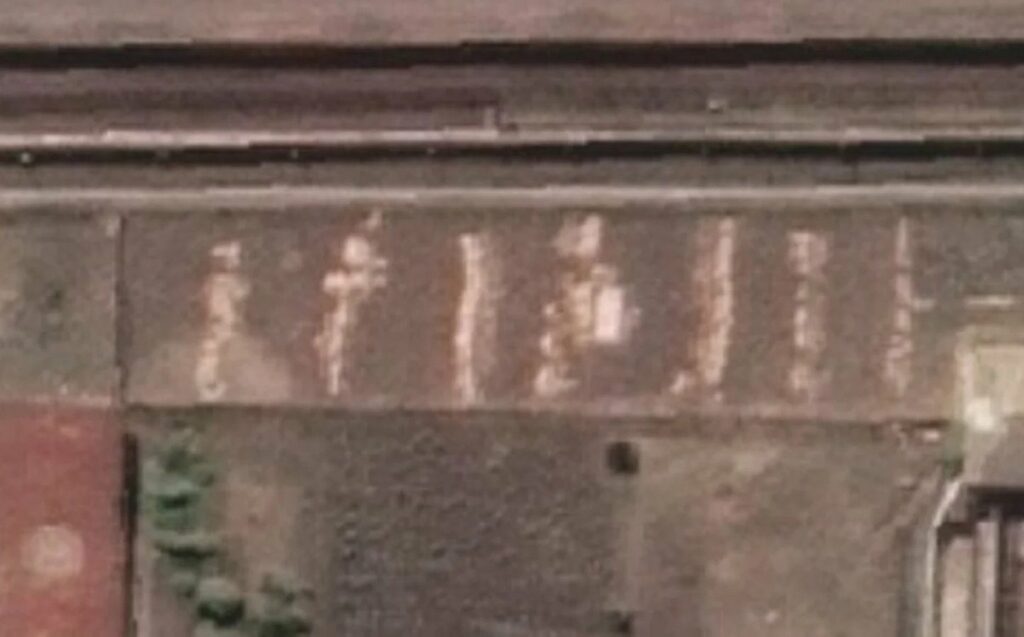
Fresh graves in Olenivka. Source: www.unian.net
The battle for the Black Sea
In the summer, satellite images showed not only Russian atrocities but also their defeats. In particular, back in March 2024, the Saratov vessel opened an account of Russian landing ships destroyed by Ukraine.

The Saratov is on fire and sinking in the port of Berdiansk. Source: Maxar Technologies
However, it was not possible to capture the destruction of the flagship of the Russian Black Sea Fleet, the cruiser Moskva. It was cloudy over the Black Sea at the time. But synthetic aperture radar (SAR) satellites came in handy. These devices receive images using radio waves and can therefore see through clouds and rain.
One of them was lucky enough to see the escort ships trying to save the missile-damaged flagship.
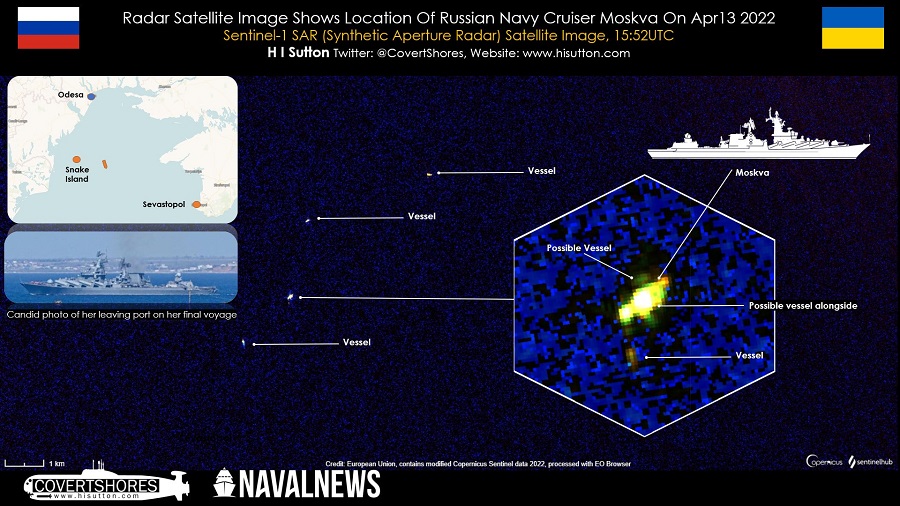
The cruiser Moskva on the Sentinel image. Source: www.navalnews.com
In the summer of 2022, the topic of Ukrainian grain arose. Russia blocked its exports through the Black Sea. Moreover, it started exporting the grain stolen in newly occupied territories to third countries. Their ships being loaded in Black Sea ports has also been repeatedly captured on satellite images.
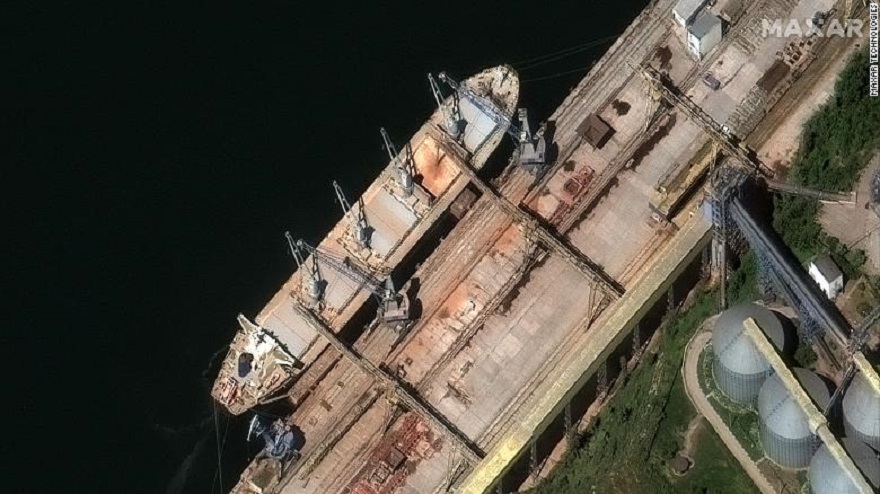
The stolen Ukrainian grain being loaded onto a Russian ship. Source: Maxar Technologies
Meanwhile, it turned out that our country is one of the world’s most important grain exporters, and even NASA is closely monitoring the harvest in Ukrainian fields

NASA satellite map of Ukrainian fields. Source: Earthobservatory.nasa.gov
Fall of 2022
In August 2022, Ukrainians were so impressed by the capabilities of radar satellites that they decided to buy one for themselves. The money for it was raised by Serhiy Prytula, and the same Maxim Polyakov acted as a consultant. Over the course of a year, the ICEYE device helped to detect thousands of enemy positions and vehicles.
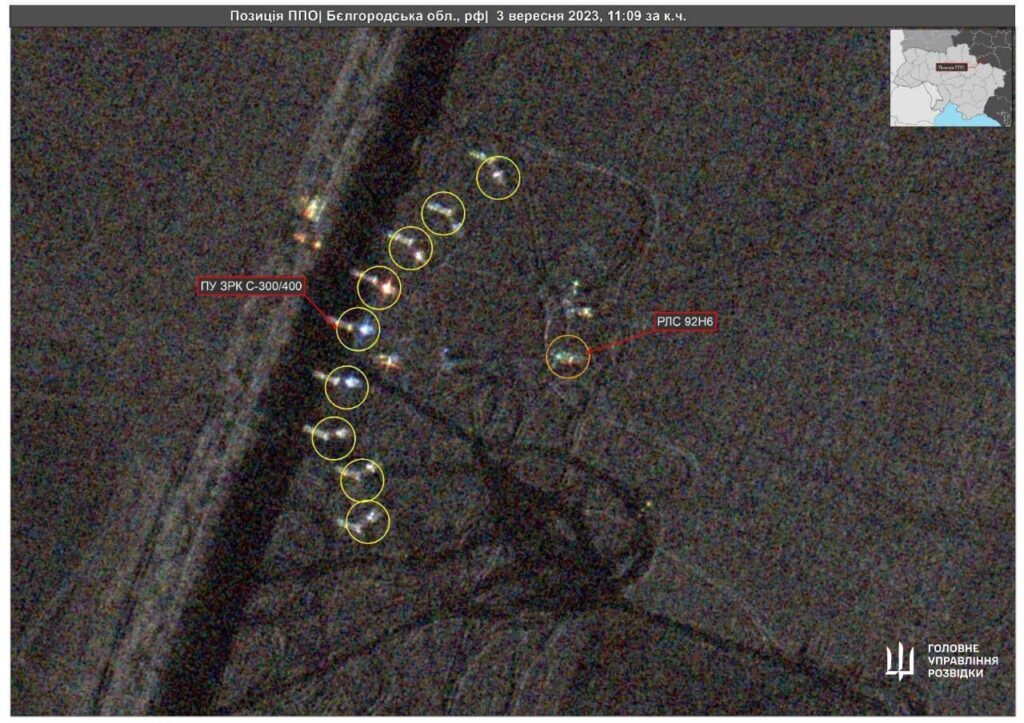
A Russian air defense position on the ICEYE satellite image. Source: HUR MO (military intelligence of Ukraine)
In September 2022, a series of explosions occurred on the Nord Stream subsea gas pipeline. Their results were also seen by the satellite. It is still unknown exactly what happened there. All that can be said for sure is that Russia has lost the opportunity to blackmail Europe with its gas.
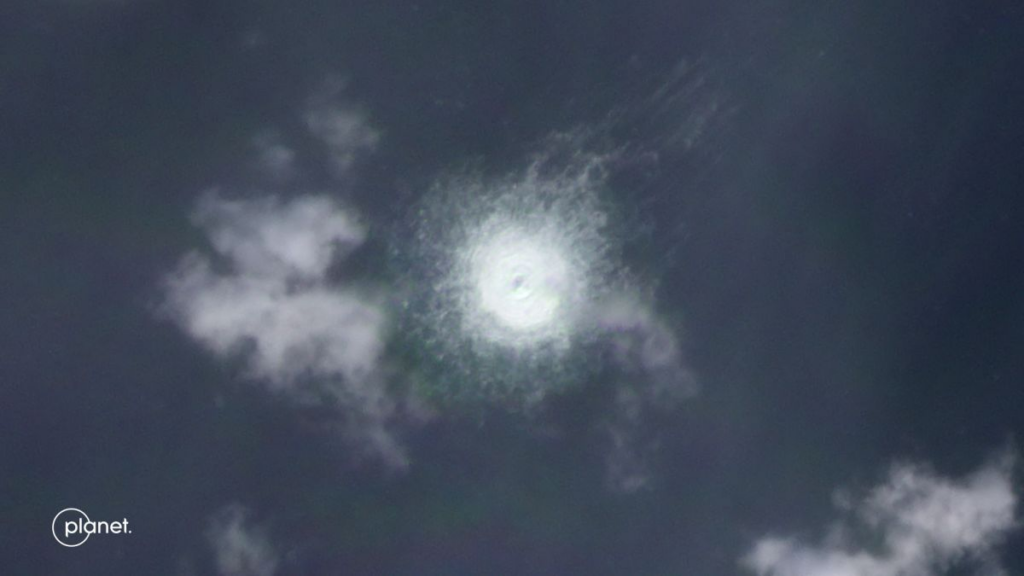
A leak from a Russian gas pipeline in the Baltic Sea. Source: Planet
And in October, some “trouble ” occurred on the Kerch Bridge, which connects Crimea with Russia.
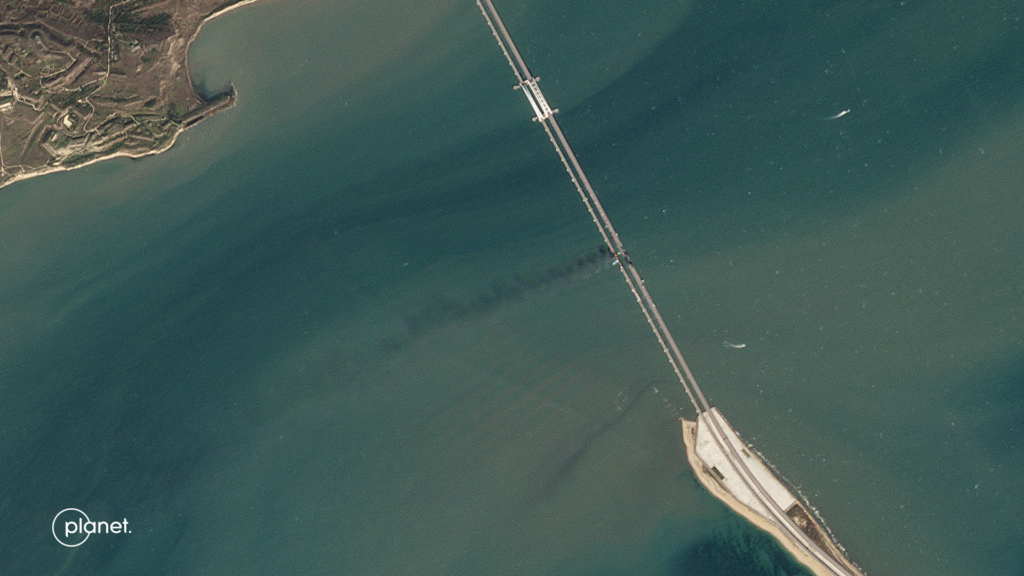
The Crimean bridge on October 8, 2022 (after the explosion). Source: Planet
Russian equipment was being monitored everywhere. The terrorist country had just begun to strike at Ukraine’s energy infrastructure, leaving millions of people without electricity and heating in the face of winter. However, neither fighters in the Kursk region (Russia), nor helicopters in the Pskov region (Russia), nor bombers over the Arctic Circle could hide from the satellites.
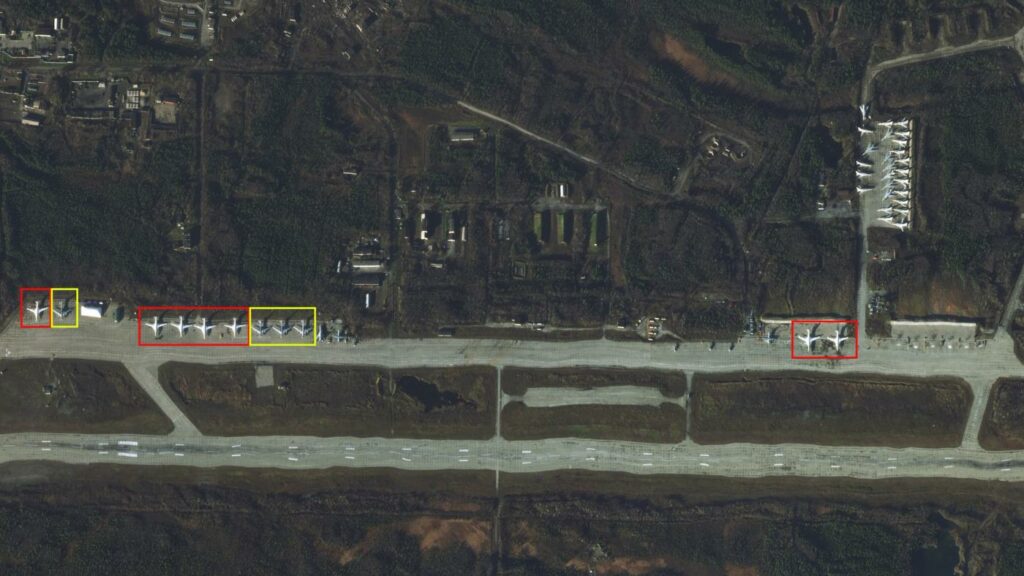
MiG-29 aircraft in storage in Millerovo. Source: Twitter.com/Ukraine_AF
Russian strategic bombers in Olenia: yellow – Tu-95, red – Tu-160. Source: Planet Labs
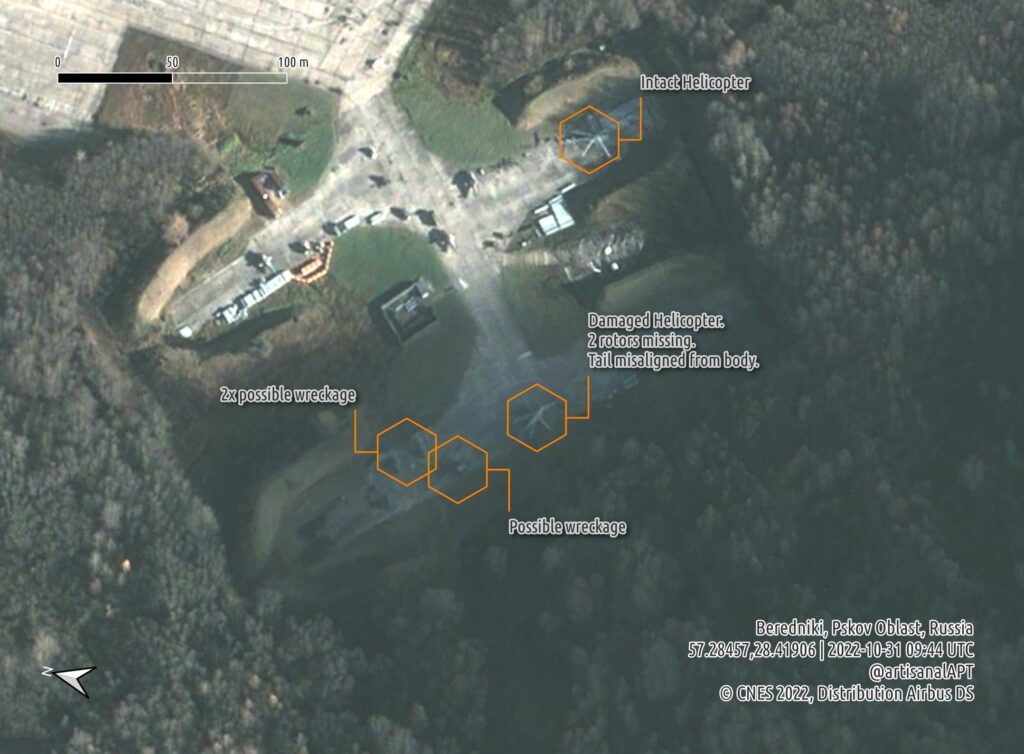
The aftermath of the sabotage in Veretie. Source: Twitter.com/GeoConfirmed
Even before the start of the new year, it became clear that the Russians were seriously preparing to defend the occupied territories. New trenches and other defensive structures have been captured by Earth-orbiting vehicles since the end of last fall.
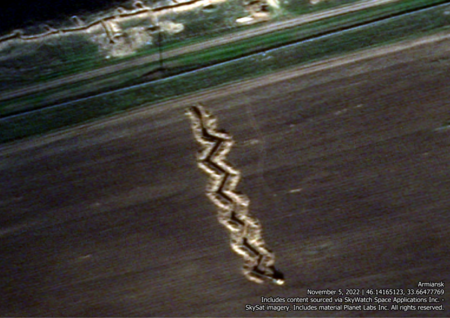
Trenches of the Russian army. Source: Planet Labs
Soledar and Bakhmut
At the beginning of 2023, the main attention was focused on cities of Bakhmut and Soledar, where fierce fighting was taking place. An example of this is the images of the village of Opytne, which had already been heavily damaged at that time.

Opytne in January. Source: Maxar Technologies
Later, their images also showed Soledar. The images captured by the satellite in orbit clearly show high-rise buildings that have turned into ruins as a result of Russian assaults.
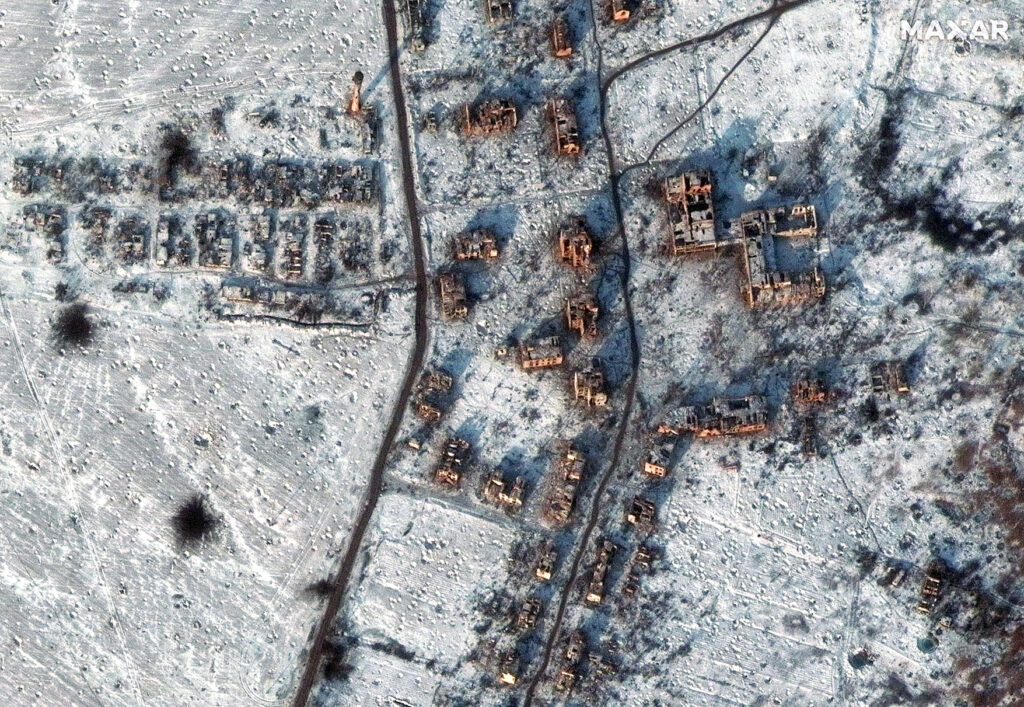
Soledar in January. Source: Maxar Technologies
In the spring, the battle for Bakhmut entered a new phase. After months of assault, Russian troops managed to occupy the territory of the city, where most of the buildings were reduced to rubble. This can be seen on satellite images taken in May.
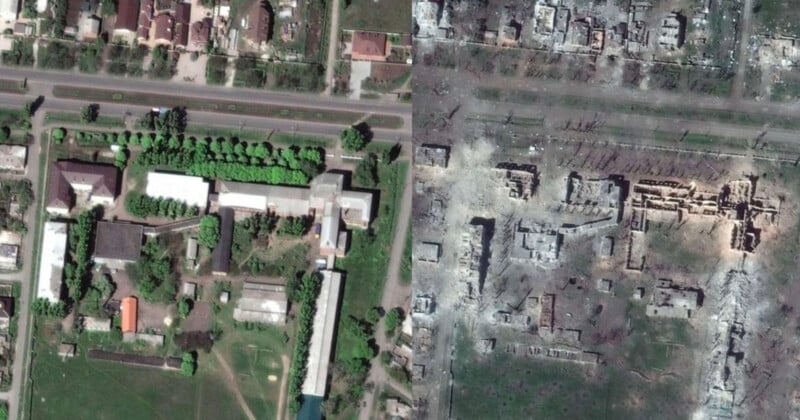
Bakhmut on satellite images. Source: Maxar Technologies
Summer of 2023
The summer of war in 2023 began with a large-scale man-made disaster. For reasons that are still unclear, the Russians blew up the dam of the Kakhovka hydroelectric power plant. This caused a large-scale flood and the destruction of settlements in the Kherson region. All of this was closely monitored by private companies’ satellites.
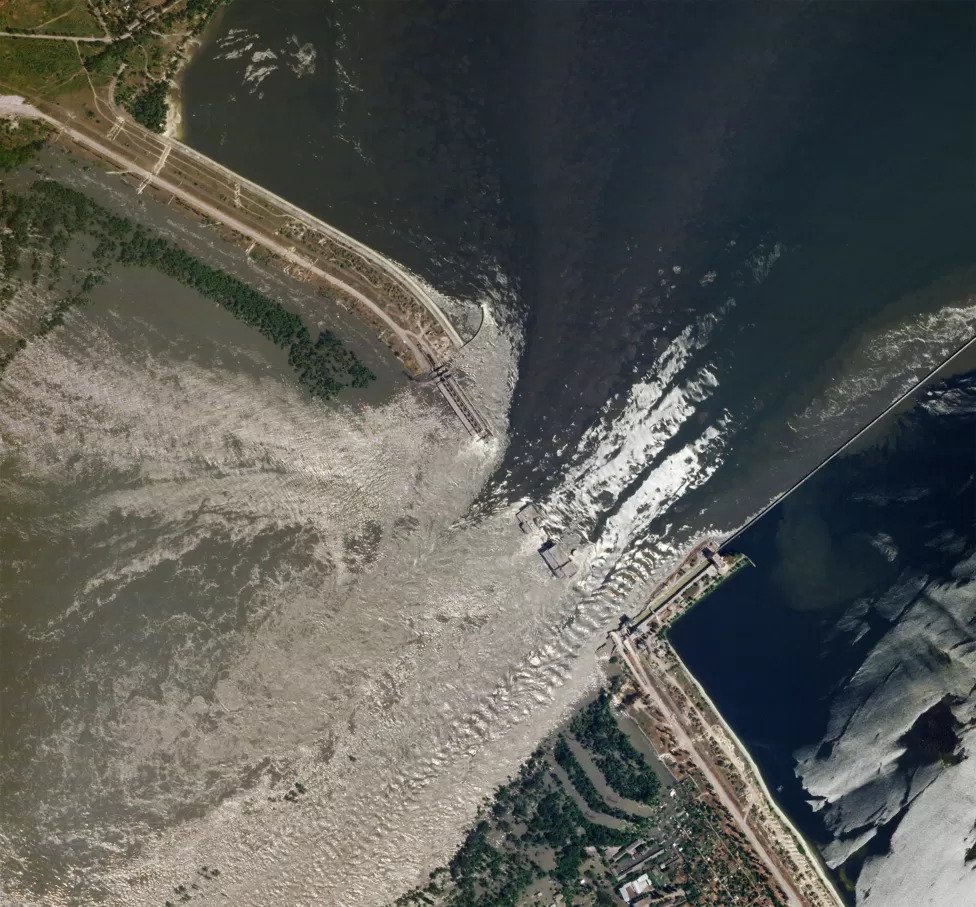
The destroyed Kakhovka hydroelectric power plant. Source: www.bbc.com
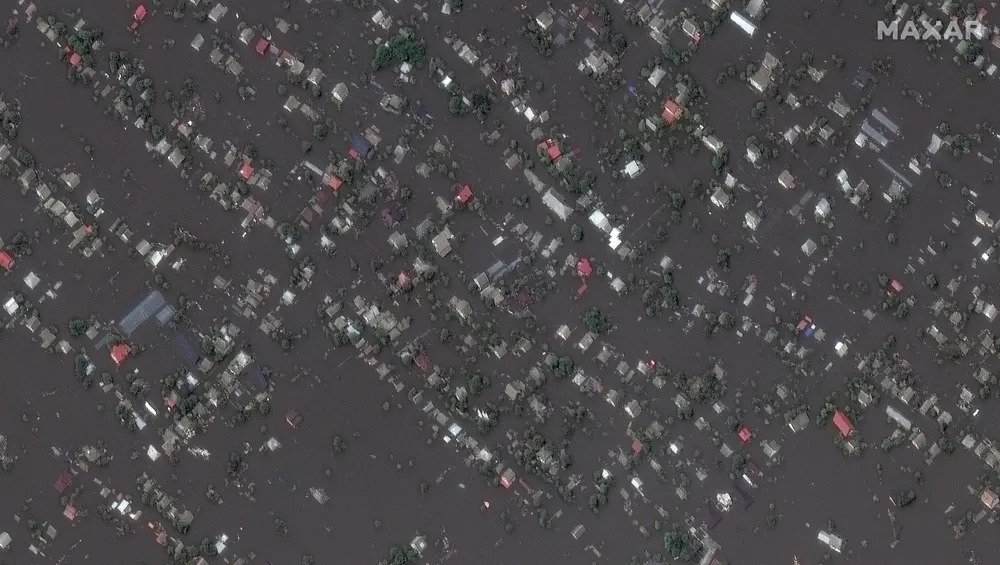
Satellite image of flooded houses. Source: Maxar Technologies
A little later, it became clear that the dam was completely destroyed and that the Kakhovka Reservoir would soon disappear completely. Experts are still arguing about the consequences of the disaster, but anyway the satellite images of what is left of it are impressive.
Another important topic in the summer of 2023 was the attempt by the leader of Russian mercenaries, Yevgeny Prigozhin, to seize power in Russia. Satellites failed to capture the coup itself. But its consequences, including the appearance of the Wagner group’s camps in Belarus, were captured.
Eventually, the Wagner leader himself became the object of commercial surveillance satellites, when they captured the wreckage of his plane, which crashed as a result of an explosion on board or being shot down by an anti-aircraft missile.
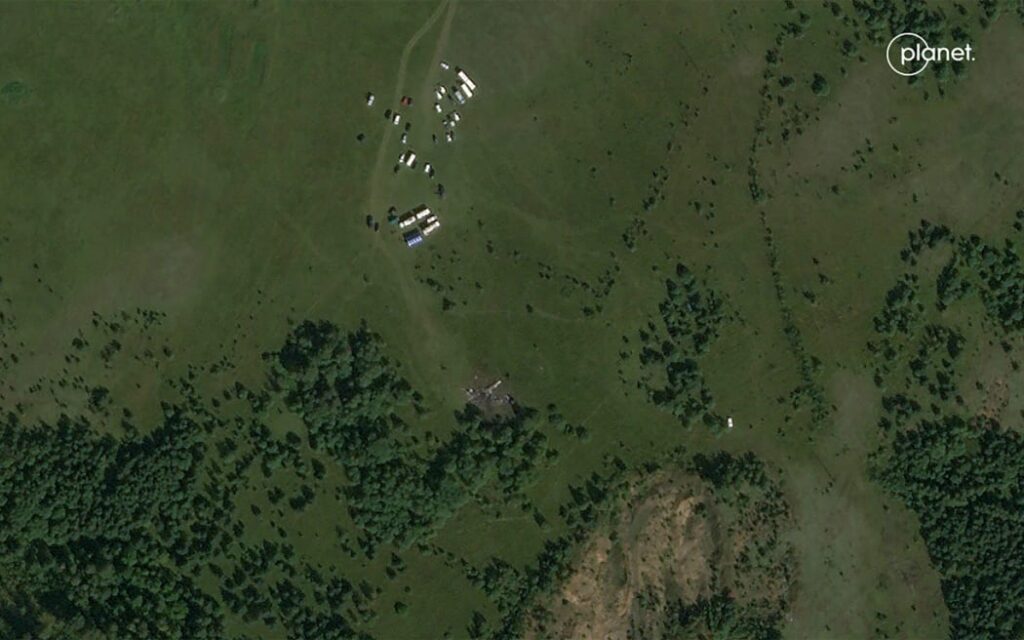
The wreckage of Prigozhin’s plane. Source: Planet Labs PBC
Destruction of Russian equipment
The fall of 2023 began with strikes by the Armed Forces of Ukraine on the occupiers’ bases. As early as September 1, images of the results of the destruction of equipment at the airfield near Russian city of Pskov appeared.

Damaged aircraft at the Pskov airfield. Source: t.me/cxemu

Radar images of the airfield in Pskov. Source: twitter.com/MT_Anderson
But this was not the end of the story, it was just the beginning. On September 12, the landing ship Minsk and the submarine Rostov-on-Don were disabled in the docks of Sevastopol.
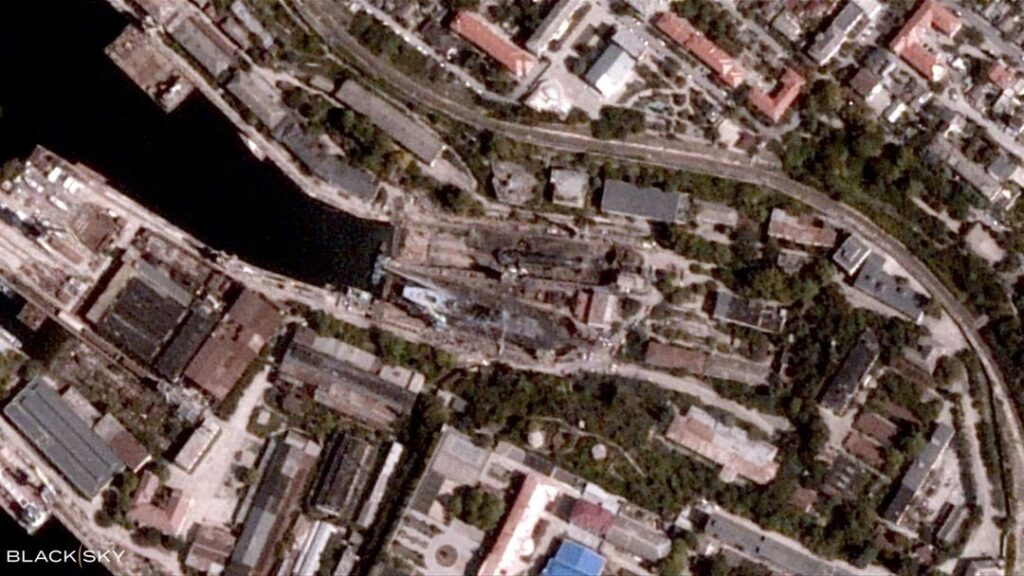
On September 13, the S-400 Triumph air defense system was destroyed in the same Crimea.

On September 20, a command post of the Russian army was destroyed in Crimea.
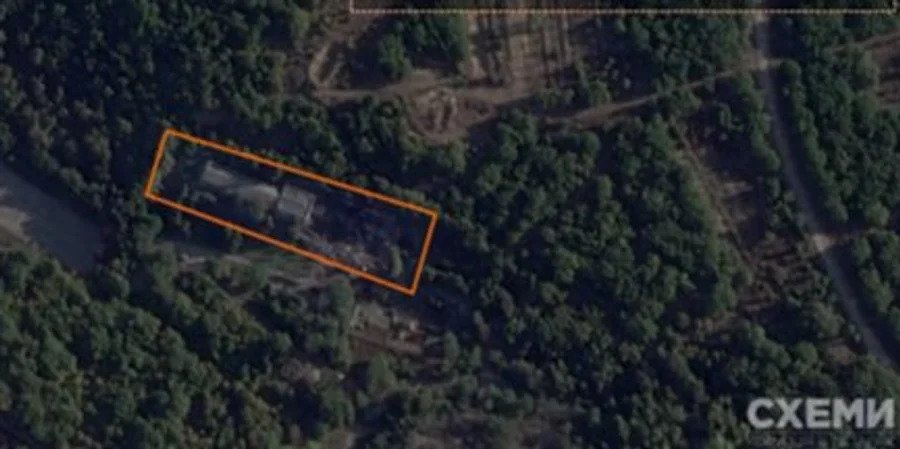
The results of these actions were not long in coming. As early as October, satellite images showed that Russia had withdrawn most of its ships from Crimea to Novorossiysk, on the Caucasus coast.
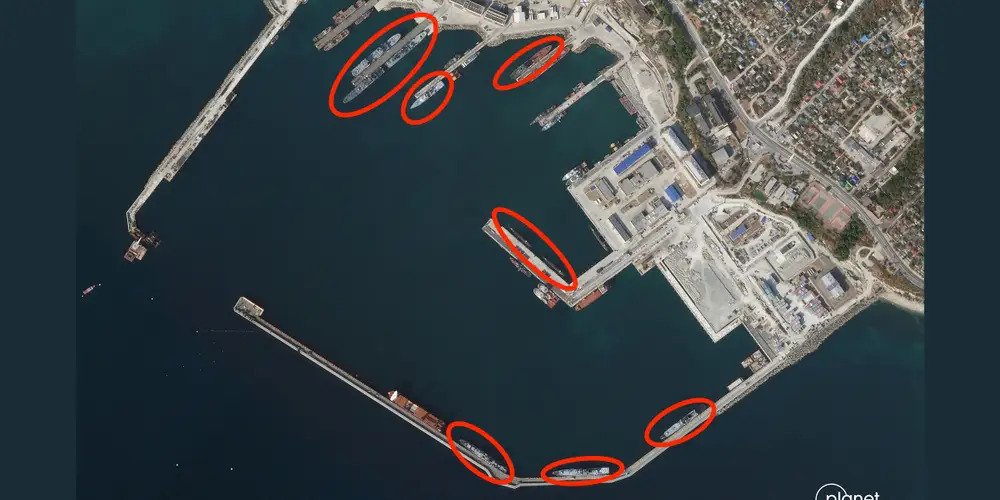
Meanwhile, the destruction of enemy equipment continued. In October, the helicopters based in Berdiansk were badly burned after the Ukrainian Armed Forces attacked them with ATACMS missiles.

Almost simultaneously, the airfield near Luhansk was attacked.
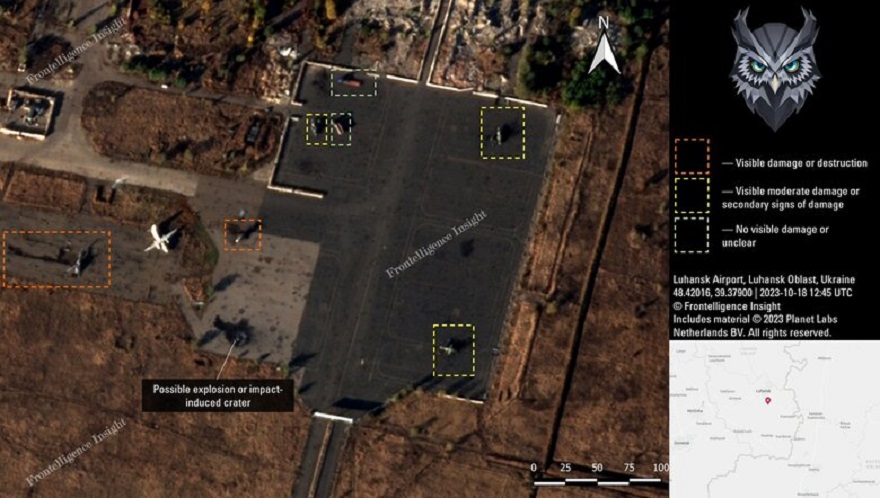
Russia’s large-scale invasion of Ukraine continues. And satellites continue to monitor it. They witness Russian crimes and confirm their defeats. We can only hope that they will soon show the complete surrender of the occupiers and the liberation of the territories they have seized.

